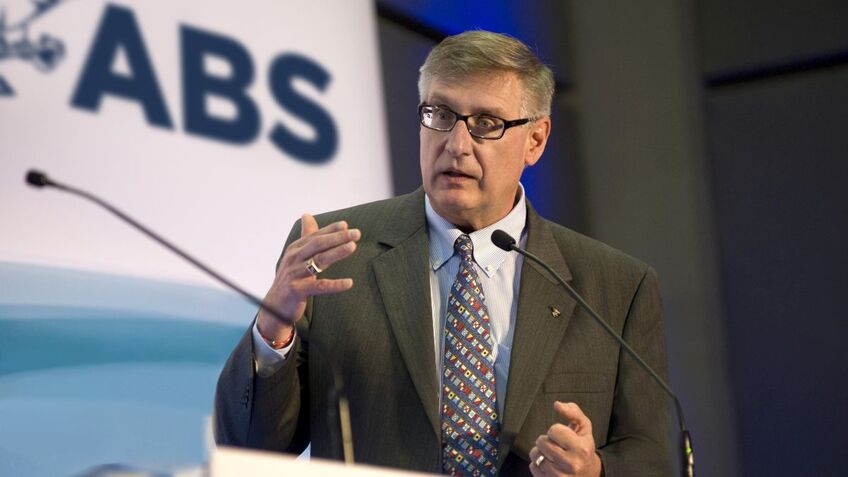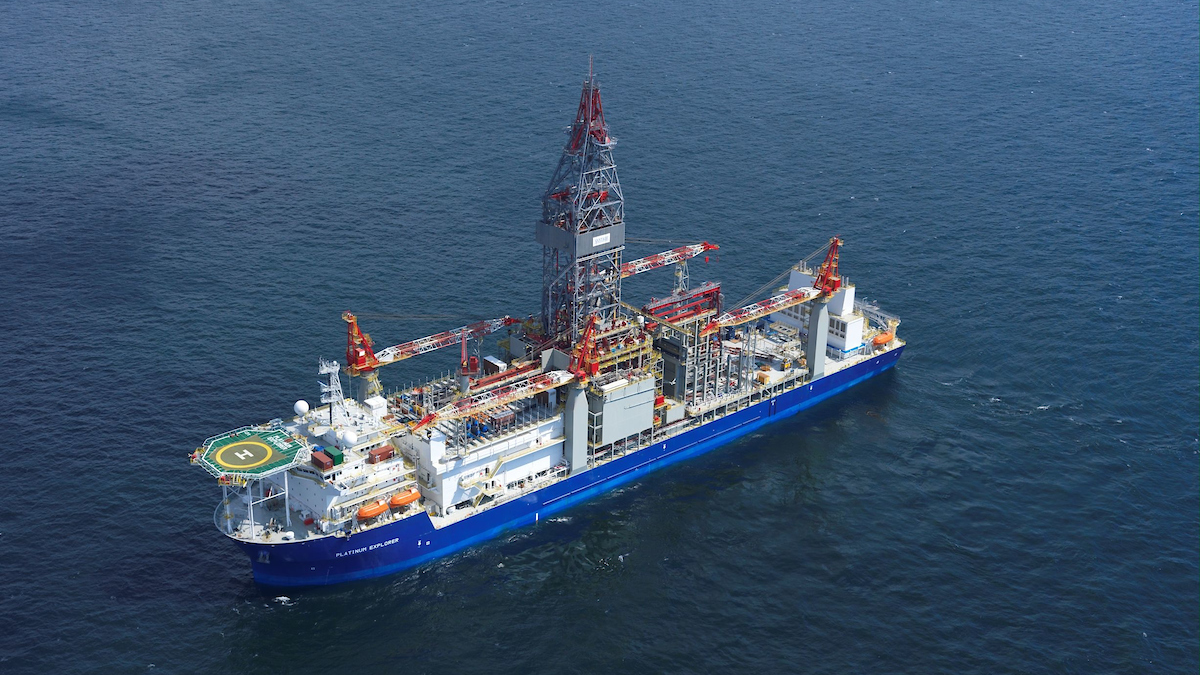Business Sectors
Events
Contents
Kistefos seeks greater role at Trico Marine Services
A war of words has developed between Trico Marine Services in the US and Norwegian private equity group Kistefos AS, the company’s largest shareholder
A war of words has developed between Trico Marine Services in the US and Norwegian private equity group Kistefos AS, the company’s largest shareholder
The disagreement between US based Trico Marine Services and Norway’s Kistefos AS revolves around control of Trico’s direction, with Kistefos owner Christen Sveaas seeking more influence over the company’s board of directors. In May, Mr Sveaas and Åge Korsvold, Kistefos’ chief executive officer, nominated themselves to Trico’s board of directors and initiated a proxy battle to meet that end. In the ensuing controversy, both companies sent out flurries of press releases, urging stockholders to vote for their own nominees and refuting the other’s claims.
The battle ended in somewhat of a draw – while Trico’s incumbent nominees, including chief executive officer and long-time chairman Joseph Compofelice, won the election, it was later revealed that Mr Sveaas won a substantial majority of votes and was shut out of the boardroom due to a technicality. The power struggle looks set to continue as both companies attempt to stabilise Trico’s volatile financial performance.
As Trico’s largest shareholder, with 21.7 per cent stock ownership, Kistefos has cause for concern about Trico’s executive governance. A brief review of Trico’s financial performance in the past few years shows a company whose acquisitions have often left the company heavily in debt. Today, Trico’s US$1.2 billion worth of assets is heavily influenced by its US$763 million worth of debt and a relatively low cash position.
Kistefos’ involvement with the company began in 2005, the year Trico filed for bankruptcy. During the restructuring, Kistefos bought up a large amount of Trico’s bond debt at a substantial discount, then later converted the debt to equity in the company.
By the end of 2005, Trico, led by Joseph Compofelice, had entered a near-miraculous turnaround, acquiring US$103 million in a public equity offering and putting operating cash flows solidly in the black. In fact, by 2007 Trico had sufficient capital to acquire Active Subsea, a Norwegian company, for US$247 million. In 2008 Trico bought two more subsea companies, Norwegian DeepOcean and UK-based CTC Marine, for approximately US$700 million. By this point, with shares trading at around US$40, Kistefos had more than doubled its investment, according to sources familiar with the matter.
Yet 2008 proved to be another rocky year for Trico. As credit markets collapsed, oil prices plummeted, and the OSV market dried up, the debt related to these acquisitions appeared more and more a liability, and the stock price fell from a high of US$42.50 in the first quarter to a low of US$3.22 in the fourth quarter. Since the start of 2009, Trico stock has dipped as low as US$1.88.
To assuage concerns about a lack of shareholder access to company management, Kistefos sought to make several changes to the way the board is run. Among them: elect Christen Sveaas and Åge Korsvold to the company’s board of directors; declassify the board; reduce the directors’ terms from three years to one; and end shareholder restrictions to call special meetings.
However, Mr Sveaas’ and Mr Korsvold’s foreign nationality presented a problem. The Jones Act limits the number of foreign citizens able to serve on executive boards of US flag companies to a minority of the quorum (the minimum number of members necessary to conduct business). Kistefos had proposed that Trico either increase the size of the quorum or remove the existing foreign national on the board, Per Staehr, to allow room for Kistefos’ nominees.
In a press release dated 21 May, Trico noted: “To comply with the Jones Act, Kistefos’s scheme requires, among other things, the removal of Per Staehr, a citizen of Denmark and a well qualified and independent director. We strongly believe stockholders would be ill-served to force the removal of such a qualified independent director solely to enact Kistefos’s agenda.”
In addition, Trico claimed the Kistefos nominees were both over-extended – both men are involved with several other companies – and inexperienced with regard to the offshore business. A major sticking point in Trico’s proxy campaign against Kistefos was the 2008 bankruptcy filing of Viking Drilling, a company founded and chaired by Mr Sveaas. Viking’s bankruptcy was affected by delays and cost overruns on refurbishment projects for its three semi-submersible rigs. Finally, Trico alleged a potential conflict of interest, given that Kistefos owns Viking Supply Ships, a company that competes with Trico Marine in the North Sea and other markets.
Kistefos strongly countered all of these claims. On 1 June, Kistefos released a lengthy press release entitled ‘Kistefos sets the record straight for Trico marine shareholders’, in which the company claimed that Trico was using the Jones Act as a “smokescreen” to keep Messrs Sveaas and Korsvold from joining the board and that the US Maritime Administration, which administers Jones Act claims, had assured Kistefos in writing that its proposed terms would not violate Jones Act law.
Kistefos also cited the example of Scorpion Offshore, a Houston-based company. Scorpion had faced serious concerns about its ability to secure financing for projects, until Mr Sveaas bought a 10 per cent stake in the company, allowing it to secure a US$52 million loan facility. Two days after this announcement, the company’s stock jumped 57 per cent. “The Scorpion case is a prime example of what can happen when a company allows willing stockholders with the right kind of expertise to work alongside management and the board to assist in meeting the challenges on hand,” Mr Sveaas said.
Several independent proxy advisors were brought in. While the majority sided with Trico’s nominees, the choice appeared to be a matter of default:
• independent firm Glass Lewis initially endorsed Kistefos, giving Trico a grade of ‘F’ in its pay-for-performance analysis and noting that Kistefos’ nominees could provide a “fresh perspective,” but later reversed its decision and endorsed Trico’s nominees, for reasons that were not immediately clear
• RiskMetrics Group, an independent proxy advisory firm, noted in its endorsement of Kistefos’ nominees that Trico’s chief executive officer, Joseph Compofelice, “bears significant responsibility for the company’s poor financial and governance practices”
• Proxy Governance and Egan-Jones both endorsed Trico’s nominees. Egan-Jones noted in its endorsement that, “While acknowledging the company’s financial difficulties and related stock performance, we believe that Kistefos has not provided a convincing plan which would likely lead to improved shareholder value.” Egan-Jones also noted that, while Kistefos’ proposal was technically within Jones Act compliance, an abundance of caution was necessary when approaching the issue.
On 10 June, Trico’s incumbent nominees, Mr Compofelice and Ben A Guill, were re-elected to the company’s board of directors, although Trico did not disclose the actual votes cast, only the results.
On 30 June, Kistefos obtained and released the actual vote count from IVS Associates, the independent firm hired to confirm the results. Mr Sveaas had in fact received 77.7 per cent of the votes cast at the meeting and 61.3 per cent of outstanding shares voted. However, Trico’s charter states that a minimum two-thirds of outstanding shares must be in favour to affect any proposal to expand the board; it appears, mainly due to this technical complication, that Mr Sveaas lost his place at the table. Mr Compofelice won re-election with only 57 per cent of votes cast at the meeting and 45 per cent of shares outstanding.
Kistefos’ proposal to reduce board members’ terms from three years to one was approved, but is non-binding and subject to further action by the board.
Studying Trico’s present condition, one could say that the company is essentially going through a series of growing pains in its move out of the OSV sector, particularly in the US Gulf market, and into specialised subsea services. While Trico remains one of the most highly-focused vessel operators in the industry, the company’s bold moves into new markets appear, at the least, to project a sense of purpose.
Trico’s newfound target area, subsea services, makes sense: the customer base is broader, and since rates are less dependent on commodity prices they are inherently more stable than in the offshore market.
In hindsight, the timing of the CTC Marine and DeepOcean acquisitions could not have been worse; however, both companies returned solid profit margins in 2008 and early 2009. Trico has largely avoided the credit-access trap that has tripped up other companies, and Mr Compofelice’s aversion to chasing the capital-intensive deepwater OSV market shows commendable foresight. The company’s total backlog currently exceeds its total debt by a healthy margin.
Trico will no doubt continue its efforts to curb Kistefos’ influence on the company, and Kistefos will continue its efforts to recoup its investment’s previous gains. Indeed, to a bystander it may seem that the corporate infighting displayed in this drama has surpassed legitimate concern over the company to become more of a battle of will.
While Kistefos appears to enjoy widespread shareholder support, whether it can provide any meaningful constructive influence at Trico is unclear. While it remains to be seen whether the apparent lack of confidence in Trico’s management has any influence on the company’s current trajectory, a lack of cohesion in the boardroom could in itself lead Trico into still more choppy waters. OSJ
Related to this Story
Women in Maritime Today: Elin Saltkjel says no day working in maritime is dull
Events
Maritime Environmental Protection Webinar Week
Cyber & Vessel Security Webinar Week
The illusion of safety: what we're getting wrong about crews, tech, and fatigue
Responsible Ship Recycling Forum 2025
© 2024 Riviera Maritime Media Ltd.













